Do you remember what you were doing in July 2008?
George W. Bush was president. Katy Perry and Lil Wayne had songs in the Billboard Top 10. Ruger had just launched the LCP, and our own Eric Hung was seven years away from creating Pew Pew Tactical.
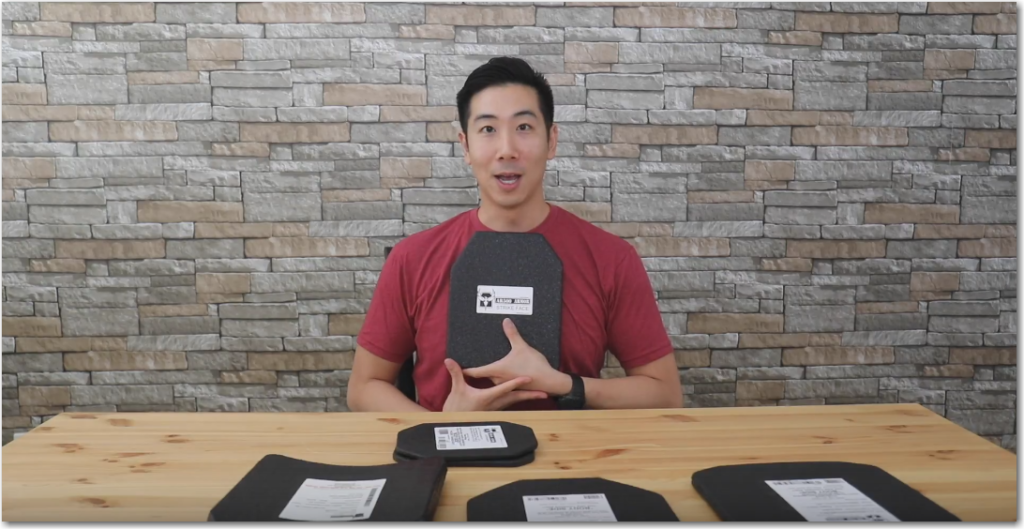
Until a few months ago, that was also the last time the National Institute of Justice updated its standards for body armor. That standard was NIJ 0101.06 — the benchmark for body armor testing and labeling in the U.S. for the past 16 years.
In November 2024, the NIJ replaced that standard with NIJ 0101.07, which included better testing methods, accounted for new threats, and offered personalized ballistic protection to more people.
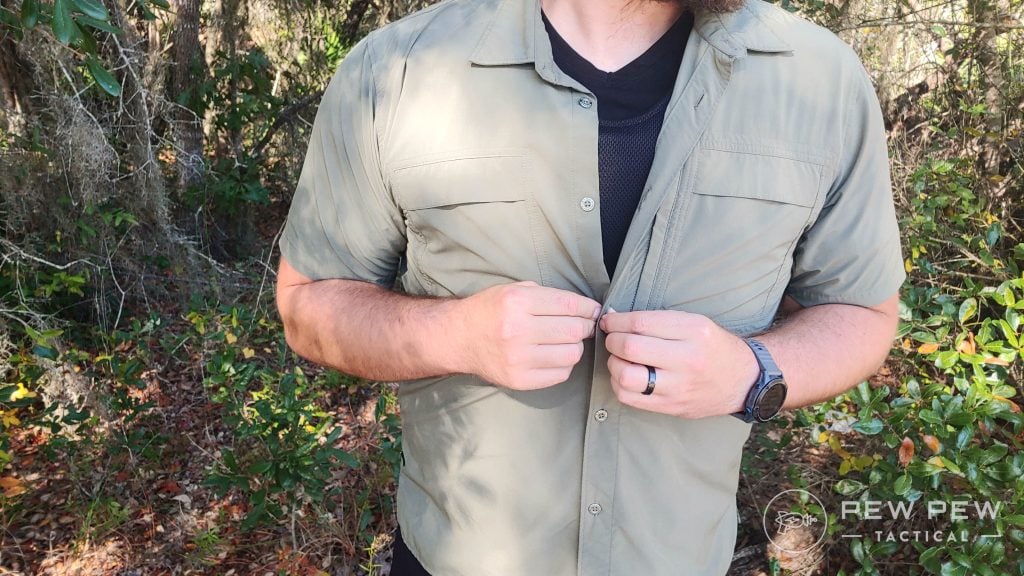
What does that mean for you? How do you know which plates to buy, and does it mean everyone with old body armor has to replace it?
We dug into the new standards and reached out to some experts to get answers to all those questions and more.
Keep reading!
Table of Contents
Loading…
NIJ Standard 0101.06: A Look at the Old Body Armor Guidelines
According to the NIJ, the purpose of standard 0101.06 was “to establish minimum performance requirements and test methods for the ballistic resistance of personal body armor intended to protect against gunfire.”
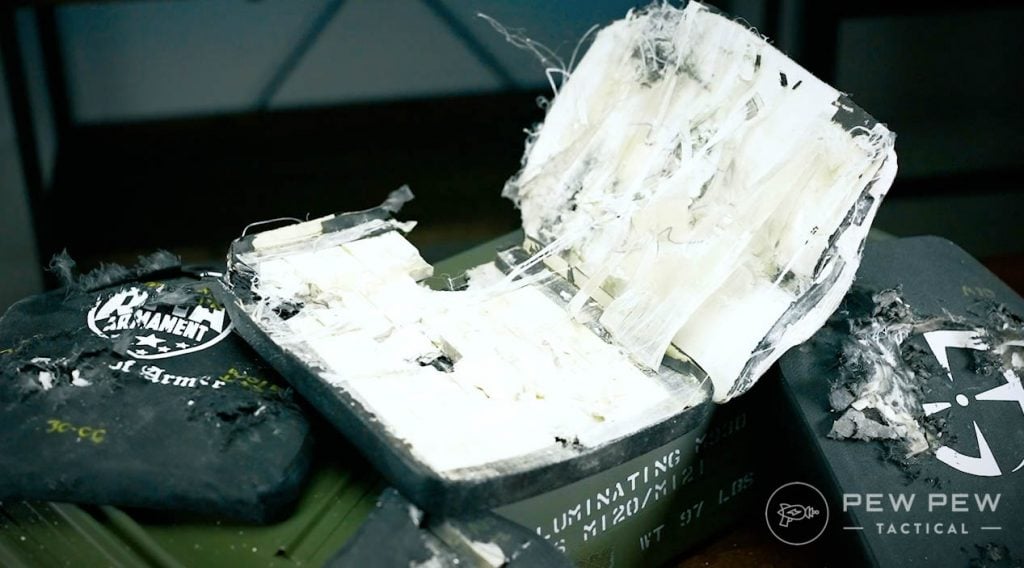
Body armor manufacturers could participate voluntarily to earn a spot on the NIJ Compliant Products List. Doing so gave customers confidence that what they were buying was the real deal.
NIJ 0101.06 divided body armor into five categories based on which threats it could defeat.
- Level IIA (new): Ammunition up to 124-grain 9mm full metal jacket at 1,225 feet per second and 180-grain .40 S&W FMJ at 1,155 feet per second.
- Level II (new): Ammunition up to 124-grain 9mm FMJ at 1,305 feet per second and 158-grain .357 Mag jacketed soft point at 1,430 feet per second.
- Level IIIA (new): Ammunition up to 125-grain .357 SIG FMJ flat-nose at 1,470 feet per second and 240-grain .44 Mag semi-jacketed hollow point at 1,430 feet per second.
- Level III (worn): Ammunition up to 147-grain 7.62 NATO M80 at 2,780 feet per second.
- Level IV (worn): Ammunition up to 166-grain .30 caliber M2 armor-piercing at 2,880 feet per second.
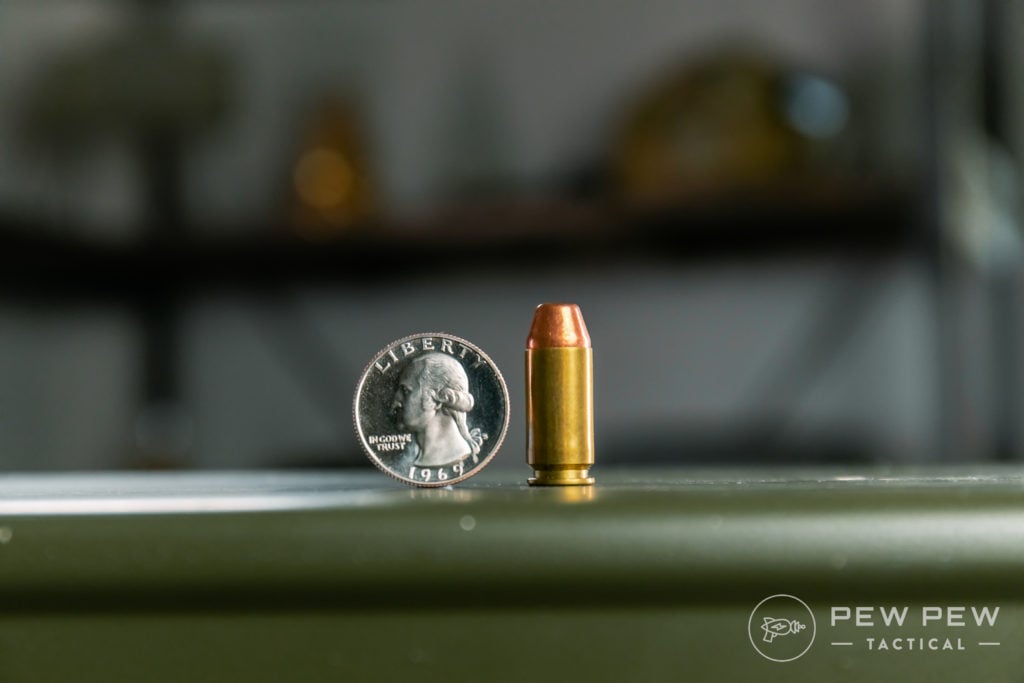
Body armor standardization is important. (We definitely took these ratings into account when we did our Best Body Armor Review.) But you might notice something about those classifications.
Who shoots .357 SIG? Where’s 5.56 NATO – you know, the most popular rifle cartridge in the U.S.?
According to Sullivan Owens, Premier Body Armor’s public engagement and relations coordinator, evolving threats, improved testing methods, and a demand for clearer guidelines compelled the NIJ to update these standards.
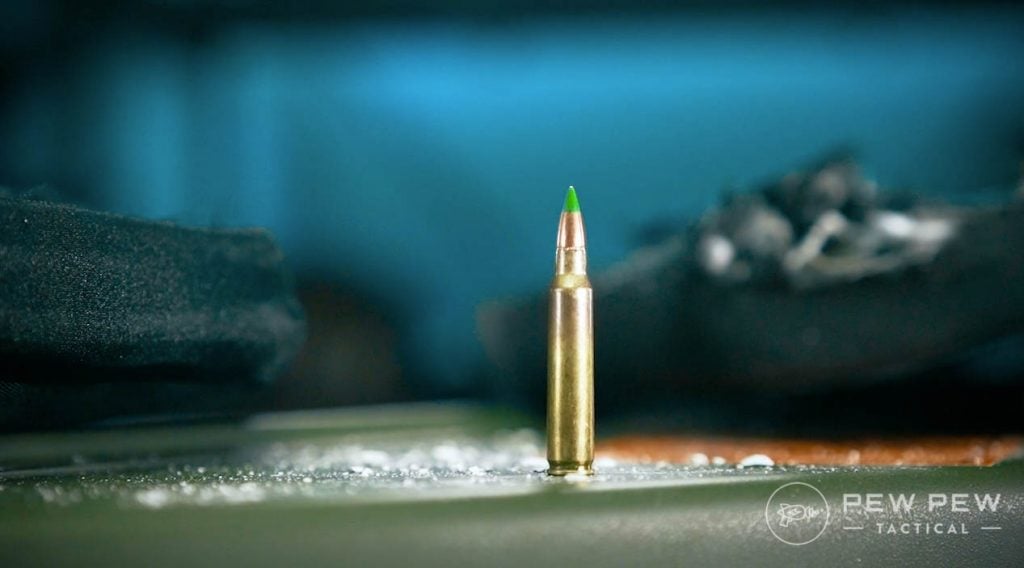
“The most common rifle calibers encountered in crimes have shifted significantly, now including 5.56x45mm and 7.62x39mm — neither of which were officially tested in the NIJ 0101.06 standard,” Owens said.
“Additionally, the growing number of female law enforcement officers necessitated updates to ensure body armor better accommodates their unique fit and protection needs.”
NIJ Standard 0101.07 Explained: What’s Changed in Body Armor Testing?
When the NIJ updated its body armor standards in November 2024, it split testing and ballistic protection levels into two separate standards.
NIJ 0101.07 sets the standard for testing, while NIJ 0123.00 sets the standards for levels of stopping power.
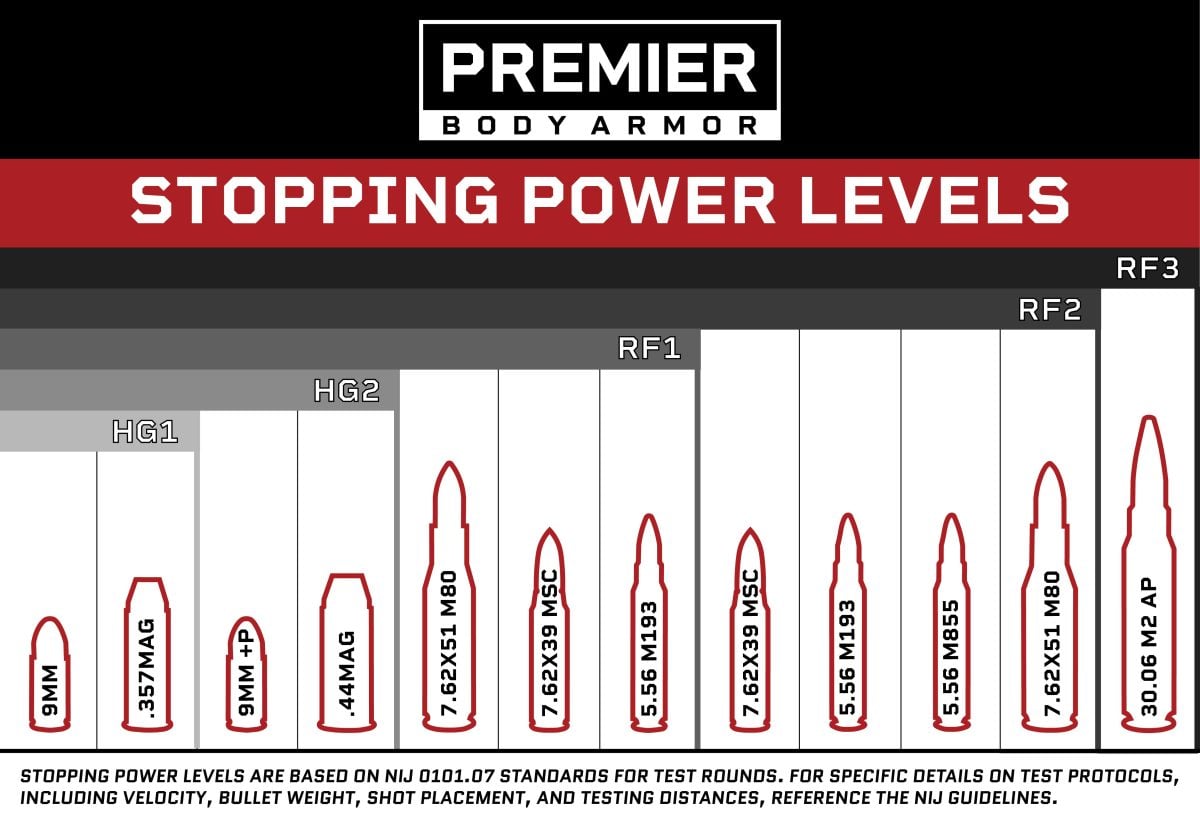
That creates a pathway to add new cartridges with a proven testing procedure in the future without revising the entire ballistic armor standard.
According to the NIJ, new protocols in standard 0101.07 create a better understanding of a product’s capabilities.
Testing involves shots at several angles in addition to 90 degrees (head-on) to account for dynamic real-world threats.
Shot placement tests weak points like vulnerable portions of soft armor and the crown of curved plates, and test curve profiles of men’s and women’s hard plates individually.
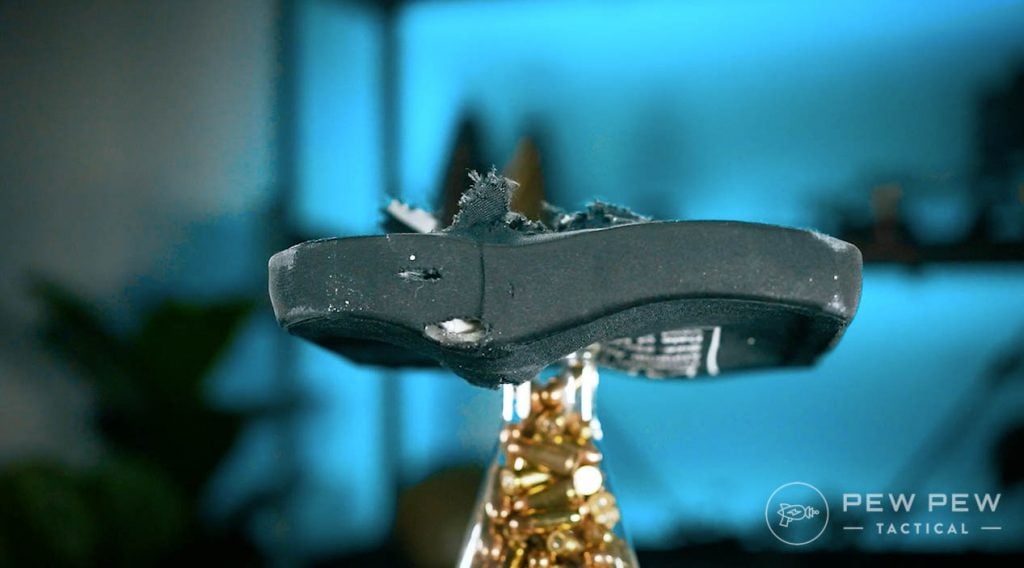
Updated testing for backface deformation accounts for the dangerous interior bulging of armor created by rounds that do not reach the body.
New ratings in standard 0123.00 are more applicable to modern threats and easier for consumers to understand.
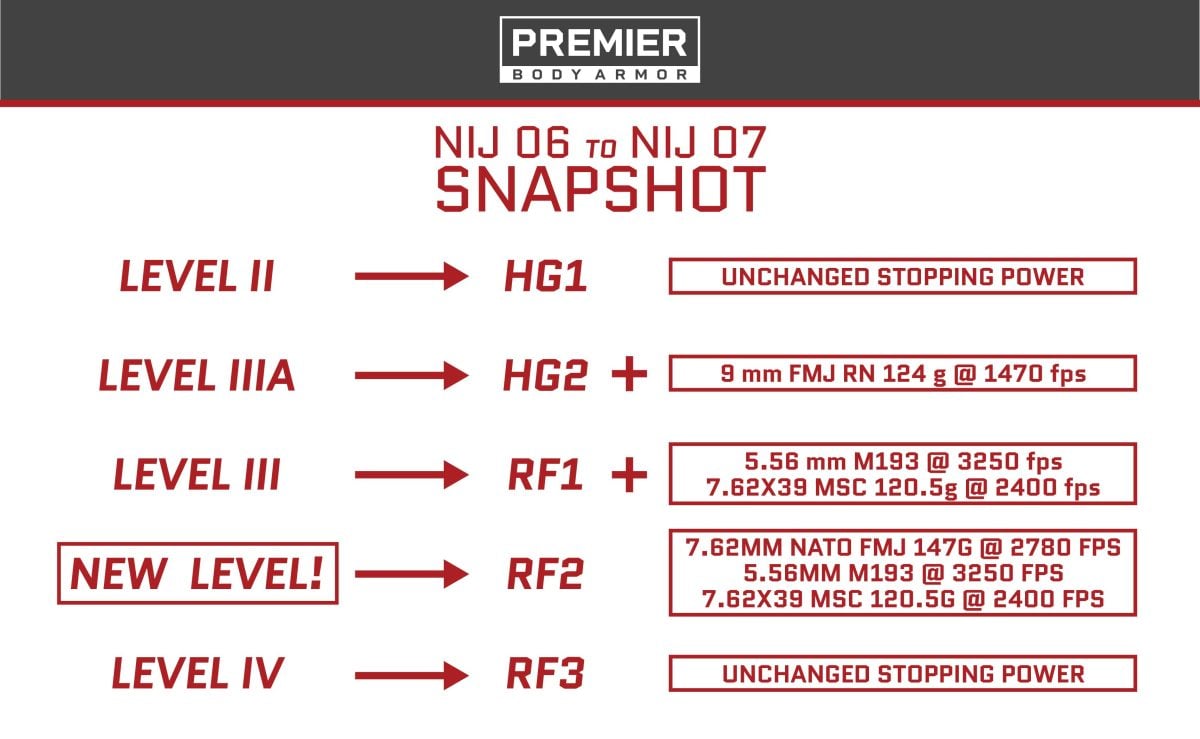
- HG1: Ammunition up to 124-grain 9mm FMJ at 1,305 feet per second and 158-grain .357 Mag JSP at 1,430 feet per second.
- HG2: Ammunition up to 124-grain 9mm FMJ at 1,470 feet per second and 240-grain .44 Mag JHP at 1,430 feet per second.
- RF1: Ammunition up to 149-grain 7.62 NATO M80 at 2,780 feet per second, Type 56 7.62×39 ball at 2,400 feet per second, and 55-grain 5.56 NATO M193 at 3,250 feet per second.
- RF2: Ammunition up to 149-grain 7.62 NATO M80 at 2,780 feet per second, Type 56 7.62×39 ball at 2,400 feet per second, and 56-grain 5.56 NATO M193 at 3,250 feet per second, and 62-grain 5.56 NATO M855 at 3,115 feet per second.
- RF3: Ammunition up to 165-grain .30-06 M2 AP at 2,880 feet per second.
According to Owens, the new RF2 standard is what most consumers should prioritize when shopping for body armor.
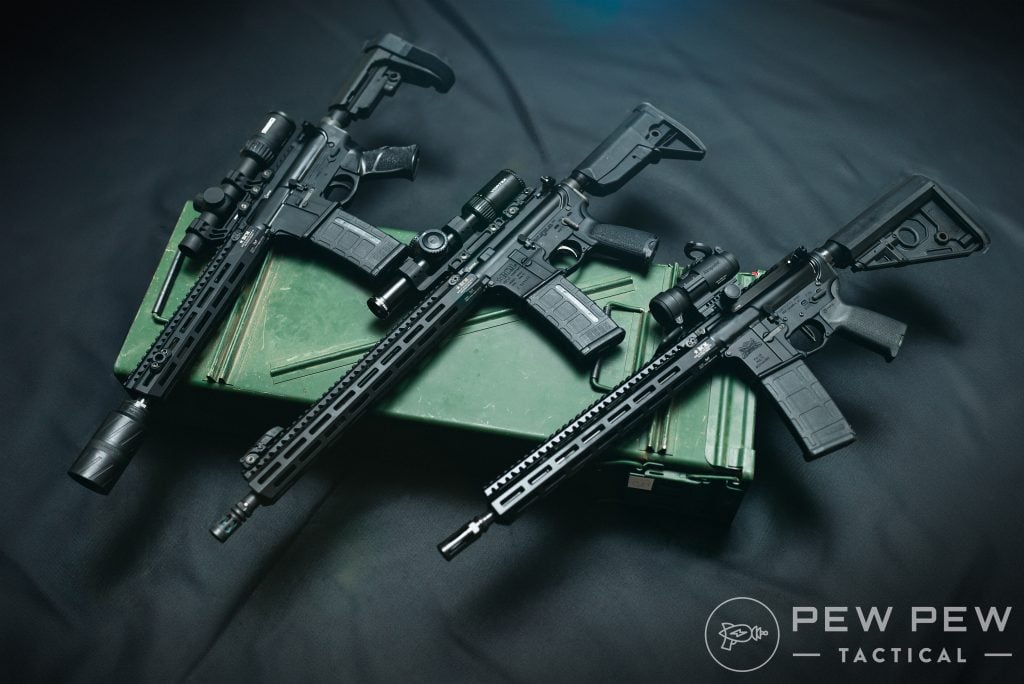
“Based on the available data from the FBI regarding shootings in the US, the RF2 rating is set to become the gold standard for rifle-rated body armor,” she said.
“It stops the most common domestic threats, including 5.56mm M855 (green tip) and 7.62x39mm, without the excessive weight of RF3, which is designed for the less common .30-06 M2 AP round. It’s the Goldilocks plate—the perfect sweet spot between protection, weight, and practicality. For anyone serious about real-world rifle protection, RF2 should be at the top of their shortlist.”
Do You Need to Replace Your Old Body Armor?
The new testing standards bode well for personal protection. That doesn’t mean you have to throw away your current body armor and start over. In fact, yours may already be just as good as what’s coming in the near future.

“Premier Body Armor continuously evolves its research and development to stay ahead of new standards and real-world threats,” Sullivan said. “But like anything, the market moves years ahead of government regulations. We’ve been developing advanced rifle plates for years, anticipating the need for lighter, stronger, and thinner armor well before the NIJ officially recognized these evolving threats. The Fortis GT is a prime example — offering enhanced protection against M855 and other rifle threats long before RF2 became an official rating.”
Keep in mind that new products may meet the most recent NIJ standards even if they don’t carry the official NIJ stamp of approval just yet. Steel plates may struggle under the new standards due to the high velocity of 5.56 NATO rounds.
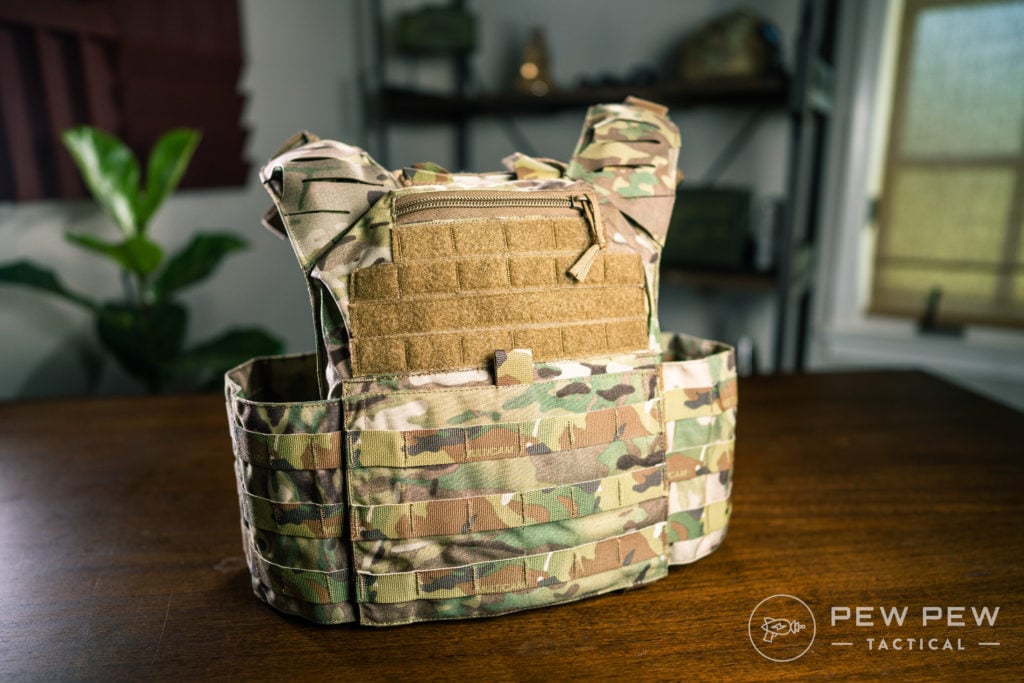
“Certification will take time,” Owens said. “With only five NIJ-certified labs and thousands of manufacturers worldwide, it will take years before every plate is officially tested under the new standard.”
The testing and rating system may have changed, but some universal truths remain. If you’re going to invest in body armor, you should buy the best plates you can afford – this isn’t a time to pinch pennies.
You’re better off buying from reputable manufacturers than a company with little or no history of testing and certification.
NIJ 0101.07 vs 0101.06: Side-by-Side Comparison

Choosing the Right Body Armor Under New Guidelines
Should you run out and buy new body armor? Maybe…maybe not.
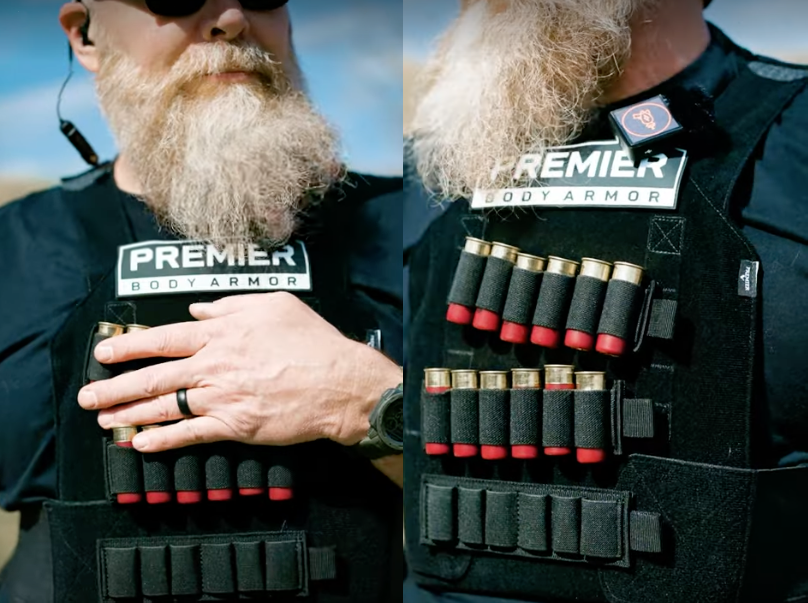
Nobody knows your need better than you. It might be worth investing in a decked-out plate carrier, maybe it’s a ballistic undershirt, or maybe it’s a soft armor panel slipped into the lining of your backpack.
But the new NIJ standards don’t mean that you have to do that.
Do you already own body armor? Let us know what you choose!

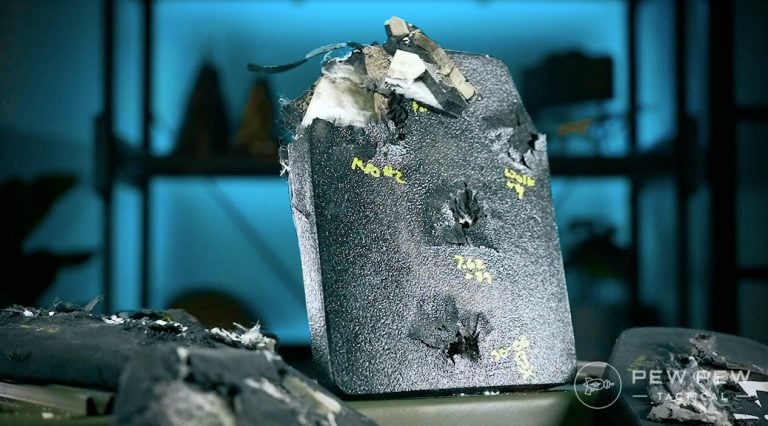







Leave a Reply